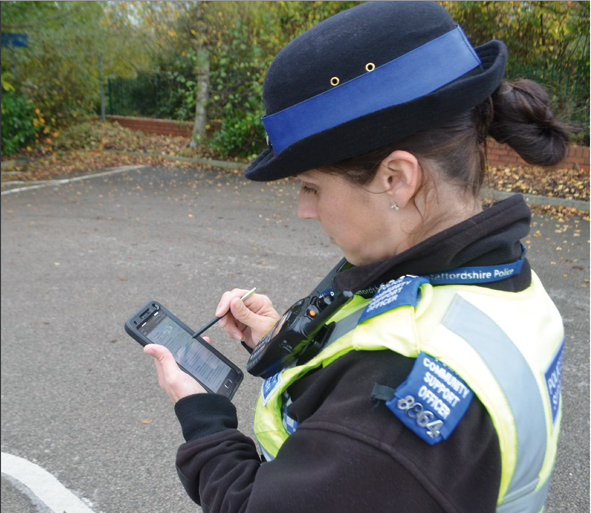Why access to data on the beat can help prevent violent crime
As cities across the US work to reduce violence in times of tight budgets, very much a parallel of the UKs policing in austerity, new research shows how they might be able to target their efforts and police resources with the help of high-powered computers and detailed data on drugs, alcohol and crimes.

In a recently-published paper, University of Michigan Medical School (UMMS) researchers and their colleagues used real police data from Boston to demonstrate the promise of computer models in zeroing in on violent areas.
They combined and analysed information, in small geographic units, on police reports, drug offences and alcohol availability at stores, bars and restaurants, as well as the education levels, employment and other attributes of the people who live there.
The result: a detailed map of violent crime hot spots and a better understanding of factors that create the right climate for violence. The researchers believe both could help a citys leaders and police focus resources on the areas where they can do the most good.
With the growing availability of data from local, state and federal sources, the team says the approach could be applied to any city or metropolitan area. It can show which micro-environments down to blocks and intersections need most attention.
In fact, they are currently preparing the same analysis for the city of Flint, Michigan, which unlike Boston has some of the nations highest violent crime rates. Victims of that violence often end up in a hospital emergency room staffed by UMMS doctors.
This approach allows us to find predictors of violence that arent just related to an individuals predisposition, but rather allow us to study people in places and a social environment, said Robert Lipton, PhD, lead author and an associate professor of emergency medicine at the UMMS.
Mr Lipton and several of his co-authors are members of the UMMS Injury Centre, which has federal funding to study and test ways to reduce injuries of all kinds.
Researchers have studied the relationship between alcohol availability and violence for years, but the new paper adds several new facets: arrests for drug possession and dealing and citizen calls to 911 about drug use, as well as the broader geographic factors surrounding each type of establishment where alcohol is sold.
Details from state liquor board licences, police records and the US Census Bureau all factored into the analysis. Over time, other types of data could be added, so that researchers and police can see the impact of any factor that might contribute to violent behaviour.
The goal is to help policy makers and police identify areas that have higher rates of risk factors that may combine to produce violence.
The density of liquor stores or alcohol-serving bars and restaurants alone isnt enough to explain violence patterns the new paper shows that it`s much more complex than that.
Why are two areas of a city, which seem to be the same across typical demographic factors, different in their level of violence? We need to become more nuanced in understanding these relationships, said Mr Lipton, who is also a member of the Prevention Research Centre at the University of Michigan School of Public Health.
The analysis of Boston data may help local authorities, while also helping the UMMS researchers test their models and theories. Even with Bostons relatively low violent crime rate, the researchers found they could show how place-based factors influence crime rates.
The study examined 2006 data on homicides and aggravated assault incidents, drug arrests and 911 citizen emergency calls from the Boston Police Department, along with the 2000 US census data and 2009 alcohol outlet data from the Massachusetts Alcohol Beverage Control Commission.
Results from the study indicate that types and densities of alcohol outlets were directly related to violent crimes, despite the fact that alcohol outlets are typically viewed as locations in which other population or environmental factors, such as poverty or prostitution, relate to the violence.
The study also shows that drug possession, rather than drug distribution, has a positive relationship with violent crimes. Features of adjacent areas and activities occurring there were also found to be significantly related to violent crime in any given target area.



